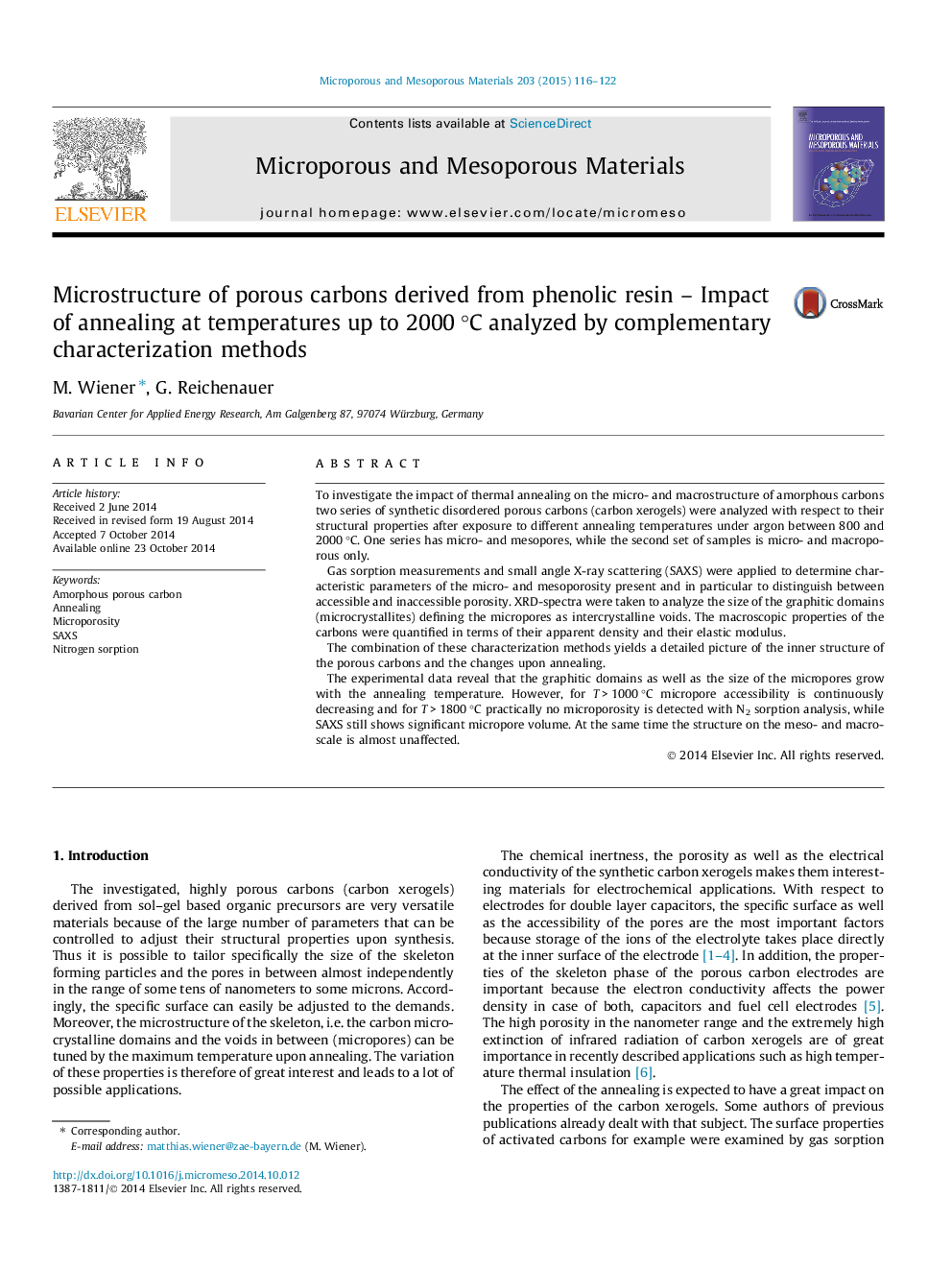| کد مقاله | کد نشریه | سال انتشار | مقاله انگلیسی | نسخه تمام متن |
|---|---|---|---|---|
| 72865 | 49036 | 2015 | 7 صفحه PDF | دانلود رایگان |

• Complementary characterization of the microstructure by SAXS and nitrogen sorption.
• Results derived by sorption measurements depend strongly on the evaluation method.
• Detailed image of the variation of the microstructure of the carbons upon annealing.
• The graphitic crystalline domains as well as the micropores expand upon annealing.
To investigate the impact of thermal annealing on the micro- and macrostructure of amorphous carbons two series of synthetic disordered porous carbons (carbon xerogels) were analyzed with respect to their structural properties after exposure to different annealing temperatures under argon between 800 and 2000 °C. One series has micro- and mesopores, while the second set of samples is micro- and macroporous only.Gas sorption measurements and small angle X-ray scattering (SAXS) were applied to determine characteristic parameters of the micro- and mesoporosity present and in particular to distinguish between accessible and inaccessible porosity. XRD-spectra were taken to analyze the size of the graphitic domains (microcrystallites) defining the micropores as intercrystalline voids. The macroscopic properties of the carbons were quantified in terms of their apparent density and their elastic modulus.The combination of these characterization methods yields a detailed picture of the inner structure of the porous carbons and the changes upon annealing.The experimental data reveal that the graphitic domains as well as the size of the micropores grow with the annealing temperature. However, for T > 1000 °C micropore accessibility is continuously decreasing and for T > 1800 °C practically no microporosity is detected with N2 sorption analysis, while SAXS still shows significant micropore volume. At the same time the structure on the meso- and macroscale is almost unaffected.
Figure optionsDownload as PowerPoint slide
Journal: Microporous and Mesoporous Materials - Volume 203, February 2015, Pages 116–122